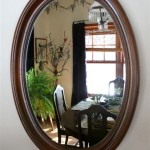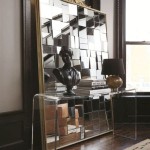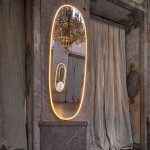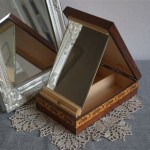The Enduring Elegance of the Queen Anne Dresser With Mirror
The Queen Anne style, named after Queen Anne of Great Britain who reigned from 1702 to 1714, represents a significant shift in furniture design. Moving away from the heavier, more ornate styles of the late Baroque period (such as William and Mary style), Queen Anne furniture embraced graceful curves, lighter proportions, and a focus on comfort and practicality. The Queen Anne dresser with mirror exemplifies these characteristics, offering both functional storage and a refined aesthetic that continues to captivate homeowners and collectors alike.
The Queen Anne style flourished in the early to mid-18th century, not just in England but also in the American colonies. This period saw a rise in trade and prosperity, leading to an increased demand for well-crafted, stylish furniture. The dresser, as a piece intended for storing clothing and personal items, became an important element in the home, and the addition of a mirror elevated its function and aesthetic appeal.
The dresser with mirror served multiple purposes. Functionally, it provided ample storage with drawers of varying sizes, suitable for shirts, undergarments, and other textiles. The mirror allowed for personal grooming and self-reflection, a significant aspect of daily life. Aesthetically, it became a focal point in the bedroom, reflecting light and adding a touch of elegance to the space. The Queen Anne style elements contributed to the overall sense of refinement and sophistication that homeowners sought to portray.
Key Characteristics of a Queen Anne Dresser With Mirror
Several distinct features define a Queen Anne dresser with mirror. Recognizing these features is crucial for identifying and appreciating the unique characteristics of this furniture style.
Firstly, the use of curved lines is paramount. Cabriole legs, characterized by a double curve resembling an animal’s hind leg, are almost universally present. These legs typically terminate in pad feet, resembling flattened spheres, or less commonly, trifid feet, which resemble cloven hooves. The serpentine or bonnet-top shape is often seen in the crest of the mirror frame, adding a further element of graceful curvature. Even the drawer fronts sometimes feature subtle curves, enhancing the overall sense of fluid motion.
Secondly, the emphasis on fine hardwoods is indicative of the style. Walnut was a favored choice, prized for its rich color, smooth grain, and ability to be finely carved. Cherry and maple were also commonly used, particularly in the American colonies where walnut might have been less readily available. These hardwoods were often finished with a high polish, enhancing the natural beauty of the wood and creating a luxurious sheen.
Thirdly, ornamentation is restrained and elegant. Unlike the heavily carved Baroque styles that preceded it, Queen Anne furniture features minimal, carefully chosen embellishments. Carved shells, often found on the knees of the cabriole legs or as a central motif on the crest of the mirror frame, are a common decorative element. Other possible adornments include delicate scrolls, foliage patterns, and simple molding. The focus is on subtle details that enhance the overall design without overwhelming the piece.
Construction and Materials
The construction techniques used in creating a Queen Anne dresser with mirror reflect the craftsmanship of the period. Dovetail joints, known for their strength and durability, were used to join the sides of the drawers. Mortise and tenon joints, another strong and reliable method, were employed to connect the legs to the frame. The back of the dresser was typically constructed using thinner panels of wood, often joined with tongue-and-groove. These construction methods ensured the longevity and stability of the piece.
The mirror itself was often made using a process that involved coating glass with mercury. While this process created a reflective surface, it was also potentially hazardous to the craftsmen involved. Consequently, original Queen Anne mirrors can show signs of aging, such as cloudiness or discoloration, due to the breakdown of the mercury coating. Modern reproductions typically use more contemporary mirror-making techniques.
The hardware used on a Queen Anne dresser with mirror also contributes to its overall aesthetic. Brass pulls and escutcheons (decorative plates surrounding the keyholes) were commonly used. These hardware elements were often simple and elegant, with smooth, rounded shapes that complemented the curved lines of the dresser. Original hardware can be a valuable indicator of authenticity and can contribute significantly to the piece's overall value.
Variations and Regional Influences
While the core characteristics of the Queen Anne style remained consistent, regional variations can be observed, reflecting the influences of local materials, craftsmanship, and aesthetic preferences.
In England, Queen Anne furniture tended to be more refined and sophisticated, often incorporating imported materials and techniques. The use of walnut was particularly prevalent, and the carving tended to be more intricate. English Queen Anne dressers with mirrors often feature a higher level of craftsmanship and detail compared to their American counterparts.
In the American colonies, the Queen Anne style was adapted to suit local conditions and available resources. The use of cherry and maple was more common due to the abundance of these woods. American Queen Anne furniture often exhibits a simpler, more rustic character, reflecting the practical needs and aesthetic sensibilities of the colonists. The carving might be less elaborate, and the overall design might be more straightforward.
Specific regions within the American colonies also developed their own distinct interpretations of the Queen Anne style. For example, furniture made in Philadelphia was known for its high quality and sophisticated design, often incorporating elements of both English and Continental styles. Furniture made in New England tended to be more restrained and practical, reflecting the Puritan values of the region.
Identifying Authentic Queen Anne Pieces
Determining the authenticity of a Queen Anne dresser with mirror requires careful examination and consideration of several factors. While professional appraisals are recommended for valuable pieces, some key indicators can help in the initial assessment.
Firstly, examine the construction techniques. Look for dovetail joints, mortise and tenon joints, and other hallmarks of handcraftsmanship. Modern furniture often uses machine-made joints that lack the precision and detail of hand-cut joints. The quality of the construction is a strong indicator of age and authenticity.
Secondly, assess the materials. Identify the type of wood used and examine its grain and color. Look for signs of aging, such as wear, discoloration, and subtle imperfections that are characteristic of antique wood. Modern reproductions often use different types of wood or employ techniques to artificially age the wood, which can often be detected with careful observation.
Thirdly, scrutinize the hardware. Examine the pulls and escutcheons for signs of wear and authenticity. Original hardware often exhibits a patina, a subtle discoloration that develops over time due to oxidation. The style and design of the hardware should also be consistent with the Queen Anne period. Reproductions often use newly manufactured hardware that lacks the character and detail of original pieces.
Fourthly, look for signs of original finish. The finish on an authentic Queen Anne dresser with mirror is likely to show signs of age, such as wear, crackling, or subtle imperfections. Modern finishes are often smoother and more uniform, lacking the character of an original finish. However, it is important to note that many antique pieces have been refinished over the years, which can make it more difficult to determine the authenticity of the finish.
Fifthly, consult with experts. If you are unsure about the authenticity of a piece, it is always best to seek the advice of a qualified appraiser or antique dealer. These professionals have the knowledge and experience to accurately assess the age, condition, and value of antique furniture.
Preservation and Care
Preserving a Queen Anne dresser with mirror requires careful attention to environmental conditions and appropriate cleaning and maintenance practices. These delicate pieces are susceptible to damage from humidity, temperature fluctuations, and improper handling.
Maintain a stable environment. Avoid placing the dresser in areas with extreme temperature or humidity fluctuations. Ideally, the relative humidity should be kept between 45% and 55%, and the temperature should be consistent. These conditions will help prevent the wood from drying out, warping, or cracking.
Protect from direct sunlight. Prolonged exposure to direct sunlight can cause the wood to fade and the finish to deteriorate. Place the dresser in a location where it is shielded from direct sunlight or use curtains or blinds to filter the light.
Clean gently. Dust the dresser regularly with a soft, lint-free cloth. Avoid using abrasive cleaners or polishes, as these can damage the finish. For more thorough cleaning, use a mild soap solution and a damp cloth, taking care to dry the surface immediately. Avoid getting the wood too wet.
Handle with care. When moving the dresser, lift it carefully and avoid dragging it across the floor. Ensure that the legs are properly supported to prevent them from breaking. When cleaning the mirror, use a glass cleaner and a soft cloth, avoiding spraying the cleaner directly onto the frame.
Consider professional restoration. If the dresser requires significant repairs or restoration, it is best to consult with a qualified furniture restorer. These professionals have the expertise to repair damage, refinish surfaces, and replace missing hardware in a manner that preserves the integrity of the piece.
The Queen Anne Dresser With Mirror in Modern Interiors
Despite its age, the Queen Anne dresser with mirror remains a versatile and stylish addition to modern interiors. Its elegant lines and refined details blend seamlessly with a variety of design styles, adding a touch of history and sophistication to any space.
In traditional interiors, a Queen Anne dresser with mirror can serve as a focal point in the bedroom, complementing other antique or reproduction furniture. Its classic design pairs well with rich colors, patterned fabrics, and ornate accessories.
In transitional interiors, the dresser can be used to add a touch of elegance and history to a more contemporary setting. Its graceful curves provide a contrast to the clean lines and minimalist aesthetic of modern furniture. Pairing it with neutral colors, simple bedding, and modern artwork can create a balanced and sophisticated look.
In eclectic interiors, the dresser can contribute to a unique and personalized space. Its classic design can be juxtaposed with bold colors, unusual textures, and vintage accessories, creating a visually interesting and layered effect. It can be incorporated into a gallery wall, used as a display surface for collectibles, or paired with unconventional seating.
The enduring appeal of the Queen Anne dresser with mirror lies in its timeless elegance, functional design, and historical significance. Whether used as a functional storage piece or a decorative accent, it adds a touch of sophistication and refinement to any home.

Rose Gold Queen Anne Dressing Table With Mirror And Stool Furniture Makeover Dresser Antique

S Queen Anne Furniture Hardwood

Davies Queen Anne 6 Drawer Ss Made Furniture

Queen Anne Walnut Dressing Mirror

Queen Anne Style Walnut Dressing Table Antiques Atlas Furniture Antique Modern

Queen Anne Antique Dressing Table With Mirror 500 00 Pic Au

Early 20th Century Vintage Queen Anne Style Dresser With Mirror By Helmers Makers Of Fine Furniture Chairish

Queen Anne Dresser In Victoria Dressers Drawers Gumtree Free Local Classifieds

1880s Queen Anne Mahogany Vanity Dresser With Original Beveled Mirror For At 1stdibs Victorian Antique

Antique 1930s Mahogany Table Rock Furniture Queen Anne Style Bedroom Dresser W Mirror In 2024 Large Morganton








